
[ad_1]
All products recommended by Engadget are selected by our editorial team, independent of our parent company. Some of our stories include affiliate links. If you buy something through one of these links, we may earn an affiliate commission.
Just a couple of years ago, the case for smartwatches wasn’t clear. Today, the wearable world is filled with a bunch of high-quality devices to choose from, and a few key players have pushed themselves to the front of the pack.
Yet some still wonder: Are smartwatches worth it? Chances are if you’re reading this guide, you’ve already decided the answer is yes. But even if the market has largely weeded out the also-rans, the devices that remain are not created equal. We’re here to help you figure out the right questions to ask while searching for the best smartwatch for you.
Smartwatch basics
Let’s lay the groundwork: Three things to keep in mind when considering any smartwatch are compatibility, price and battery life. All the major smartwatches today pair with a smartphone, so you’ll need to find one compatible with your operating system.
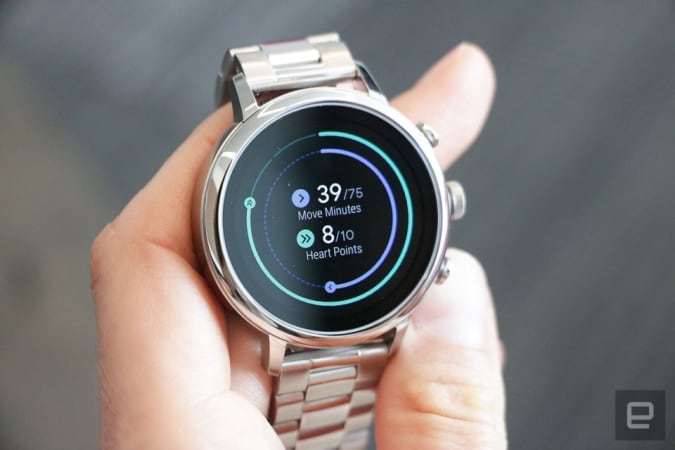
Cherlynn Low
Compatibility
Apple Watches only work with iPhones, while Wear OS devices play nice with iOS and Android. Smartwatches made by Samsung, Garmin, Fitbit and others are also compatible with both Android and iOS, but you’ll have to install a companion app.
The smartwatch OS will also dictate the type and number of on-watch apps you’ll have access to. Many of these aren’t useful though, making this feature one that’s not too high on our requirements list.
Price
The best smartwatches generally cost between $200 and $400. Compared to budget smartwatches, which cost between $100 and $200, these more expensive devices have advanced fitness, music and communications features. They will often also have perks like onboard GPS, music storage and NFC, which budget devices generally do not have.
Some companies make specialized fitness watches: Those can easily be more than $500, and we’d only recommend them to serious athletes. “Luxury” smartwatches can also reach sky-high prices, but we wouldn’t recommend any of them. These devices can cost more than $1,000, and you’re usually paying for a brand name or some exotic but ultimately useless materials.
Battery life
Battery life remains one of the biggest complaints about smartwatches, but strides have been made recently. You can expect two full days from Apple Watches and most Wear OS devices. Watches using the Snapdragon Wear 3100 processor support extended battery modes that supposedly allow you to get up to five days on a charge — if you’re willing to shut off most features aside from, you know, displaying time. Snapdragon’s next-gen Wear 4100 processor was announced, but we have yet to see the first smartwatches running on it. Other devices can last five to seven days, but they usually have fewer features and lower-quality displays, and some fitness watches can last weeks on a single charge.
A few smartwatches now support faster charging, too. For example, Apple promises the Series 6 can go from zero to 80 percent power in just a half hour, and get to full charge in 90 minutes. The new is even speedier, powering up from zero to 43 percent in just 10 minutes (however, that turned out to be one of the only good things about OnePlus’ wearable).
What to look for in a smartwatch
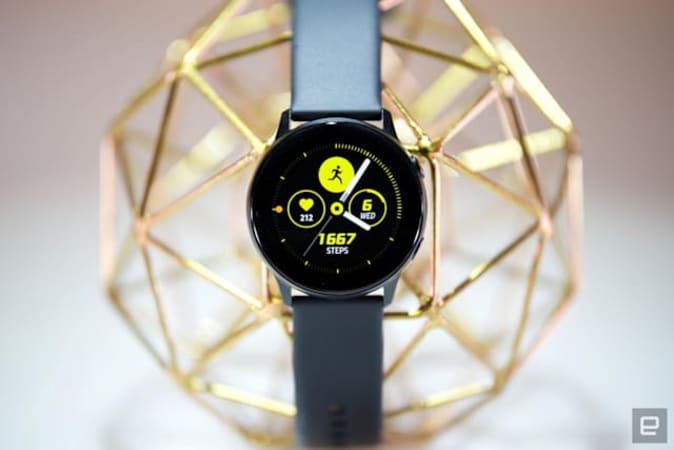
Engadget
Fitness tracking
Activity tracking is a big reason why people turn to smartwatches. An all-purpose timepiece should log your steps, calories and workouts, and most of today’s wearables have a heart rate monitor as well.
Many smartwatches also have GPS on board, which is useful for mapping runs and bike rides. Swimmers will want something water-resistant, and thankfully most all-purpose devices now can withstand at least a dunk in the pool. Some smartwatches from companies like Garmin are more fitness-focused than others and often offer extra features like heart-rate-variance tracking, recovery time estimation, auto-exercise detection, onboard maps and more.
Over the past couple of years, health tracking has become more advanced on most smartwatches as well. Both Apple and Fitbit devices can estimate blood oxygen levels and the Apple Watch can even measure ECGs. But the more affordable the smartwatch, the less likely it is that it has advanced health tracking features like those — if collecting that type of data is important to you, you’ll have to pay for it.
Music
Your watch can not only track your morning runs but also play your jogging jams. Many smartwatches let you save your music locally, so you can connect wireless earbuds and listen to tunes without bringing your phone. Those that don’t have onboard storage for music usually have on-watch music controls, so you can control playback without whipping out your phone. And if your watch has LTE, local saving isn’t required — you’ll be able to stream music directly from the watch to your paired earbuds.
NFC
Many smartwatches have NFC, letting you pay for things without your wallet. After saving your credit or debit card information, you can hold your smartwatch up to an NFC reader to pay for a cup of coffee on your way home from a run. Keep in mind that different watches use different payment systems: Apple Watches use Apple Pay, Wear OS devices use Google Pay, Samsung devices use Samsung Pay and so forth. Fitbit and Garmin even have their own versions called — you guessed it — Fitbit Pay and Garmin Pay.
Communication
Smartwatches can also make communication easier with app alerts, text replies and call-answering capabilities. App alerts delivered to your smartwatch let you glance down and see if you absolutely need to check your phone right now. Text alerts do the same, and some smartwatches let you send short replies directly from your wrist. Others let you answer calls as well, and those that have LTE let you make calls even when your phone is off.
Engadget Picks
Best overall: Apple Watch
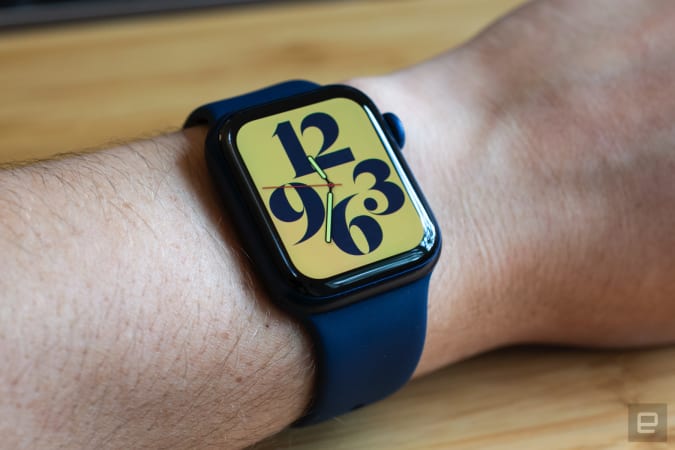
Valentina Palladino / Engadget
The Apple Watch has become the most robust smartwatch available since its debut in 2015. It’s the no-brainer pick for iPhone users, and we wouldn’t judge you for switching to an iPhone just to be able to use an Apple Watch. The latest model, the Apple Watch Series 6, has solid fitness-tracking features that will satisfy the needs of new and seasoned athletes. It also detects if you’ve fallen,can carry out ECG tests and measures blood oxygen levels. Plus, it offers NFC, onboard music storage and many useful apps as well as a variety of ways to respond to messages.
While the Series 6 is the most feature-rich Apple Watch ever, it’s also quite expensive, with a starting price of $399. Those who do not need an always-on display, ECG or blood oxygen readings can consider buying an Apple Watch SE, which starts at $279.
We actually consider the Watch SE to be the best option for your first smartwatch, or are on a strict budget. You’ll get all the core Apple Watch features as well as things like fall detection, noise monitoring and emergency SOS, but you’ll have to skip advanced hardware perks like a blood oxygen sensor and an ECG monitor.
Buy Apple Watch Series 6 at Amazon – $399 Buy Apple Watch SE at Amazon – $279
Best budget: Fitbit Versa 2
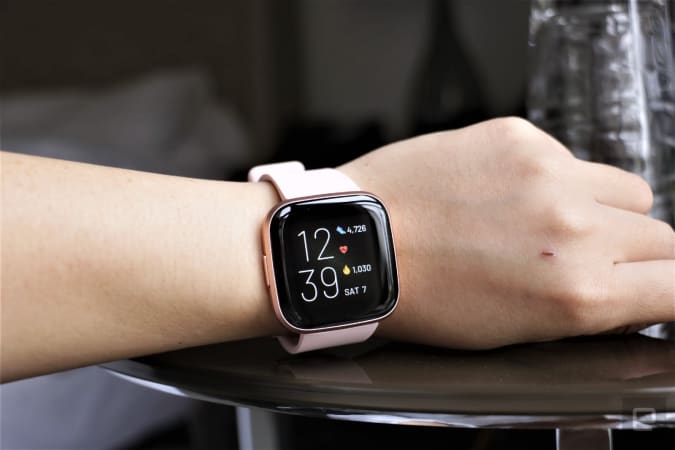
Dropping $400 on a smartwatch isn’t feasible for everyone, which is why we recommend the Fitbit Versa 2 as a sub-$200 option. It’s our favorite because it offers a bunch of features at a great price. You get all of these essentials: Fitbit’s solid exercise-tracking abilities (including auto-workout detection), sleep tracking, water resistance, connected GPS, blood oxygen tracking and a six-day battery life. It even supports Fitbit Pay using NFC and it has built-in Amazon Alexa for voice commands. While the Versa 2 typically costs $180, we’ve seen it for as low as $150.
Buy Fitbit Versa 2 at Amazon – $180
Best for Android phones: Samsung Galaxy Watch Active 2
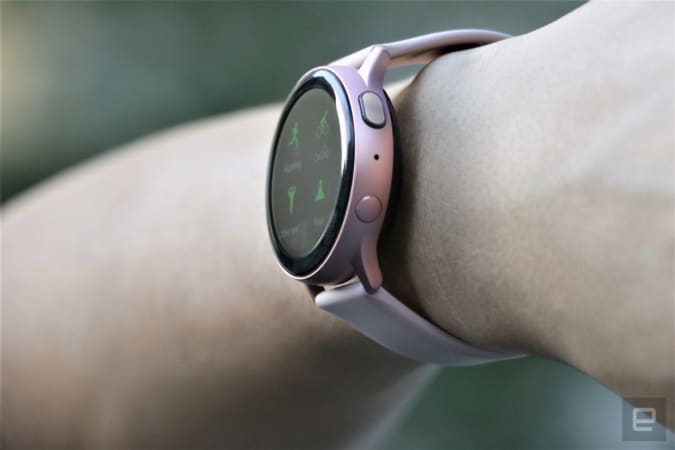
Engadget
Samsung has dedicated time and resources to make its Tizen smartwatch OS a good alternative to Google’s Wear OS (in many ways, we prefer it to Google’s software). The Galaxy Watch Active 2 stands out with its relatively slim design, numerous health-tracking features like automatic exercise tracking and sleep monitoring, and general smartwatch perks like smart home control, ride hailing and music playback. We also like its touch-sensitive bezel that lets you navigate the interface a bit more easily. The Galaxy Watch Active 2 tracks activity with the best of them too, and its improved internal sensors are quick and accurate. While it’s on the expensive side at $250, we often see it go on sale for $200.
It’s worth noting that we will see some significant WearOS updates in the near future. Google announced at its annual developers conference that it’s working closely with Samsung to create a revamped version of WearOS that brings in some features from Tizen that we like. Google also completed its purchase of Fitbit not too long ago, so the updated WearOS will likely have software features that Fitbit devices have had for a while.
Buy Galaxy Watch Active 2 at Amazon – $249
Fashion-forward options
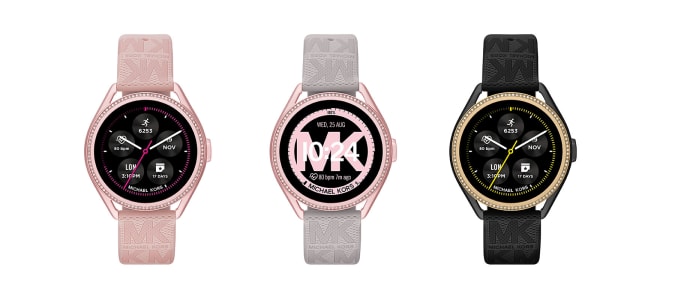
Fossil
Yes, there are still companies out there trying to make “fashionable” smartwatches. When wearables were novel and relatively ugly, brands like Fossil, Michael Kors and Skagen found their niche in stylish smartwatches that resembled traditional timepieces. They remain good options today if you prefer that look, but wearables made by Apple, Samsung, Fitbit and others have gotten much more attractive since then.
Ultimately, the only thing you can’t change after you buy a smartwatch is its case design. If you’re not into the mini-iPhone look of the Apple Watch, all of Samsung’s smartwatches have round cases that mimic the feel of a traditional watch. Most wearables come in a few case colors and you can pay extra for premium materials like stainless steel. Once you decide on a case, your band options are endless. There are dozens of first- and third-party available for most major smartwatches, allowing you to change up your look whenever you please.
Cherlynn Low contributed to this article.
[ad_2]
Source link






